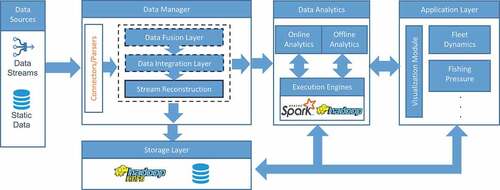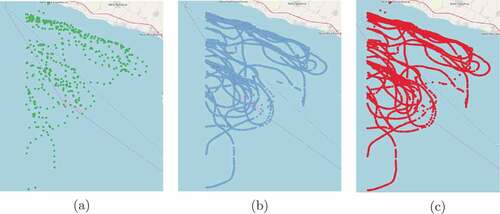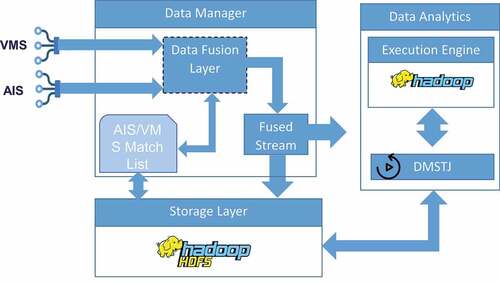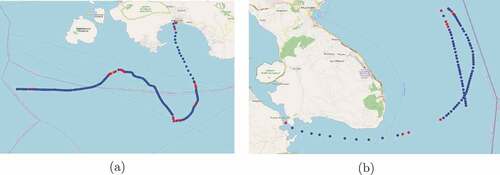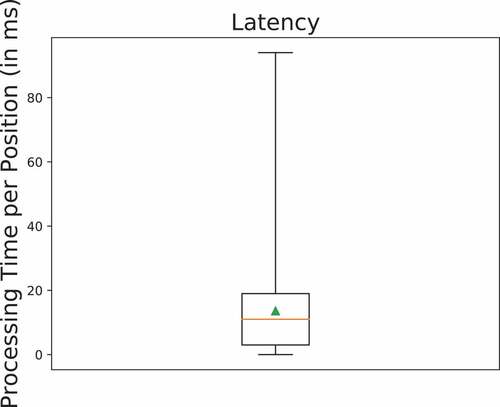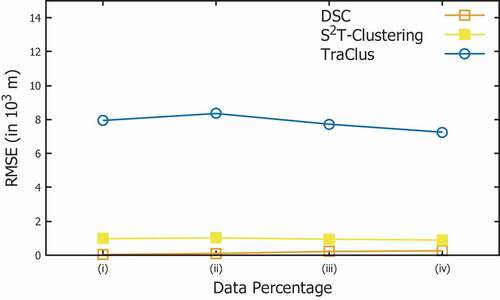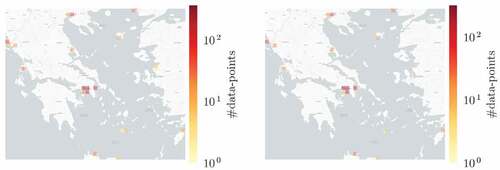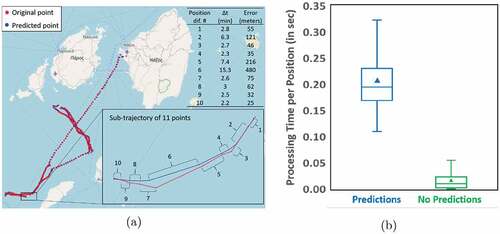Figures & data
Figure 9. Data points are mapped to and grouped by cells, yielding a dataset of cells with a specific value.

Figure 10. Data locality in Hotspot Analysis. A worker is processing the partition with white cells. Gray cells denote exterior cells of neighboring partitions that are transmitted to the worker, so that the whole neighborhood of each white cell is made locally available to the worker.
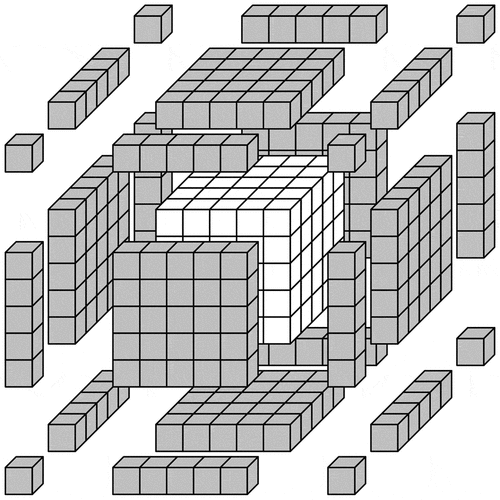
Figure 11. Network architecture for the proposed LSTM model, with one LSTM cell and two fully connected layers. The dark blue boxes indicate layers in the network, while the light blue ones indicate the input-output information.

Figure 14. Fishing vessel activity view of the online analytics results monitoring application prototype. A fishing vessel is depicted as either mooring, steaming, or fishing.

Table 1. AIS/VMS fusion confusion matrix with accuracy and precision
Table 2. Compression rate of Synopses Generator
Table 3. Experimental evaluation of online mobility data enrichment in Apache Spark Streaming. Noise-free AIS traces vs AIS Synopses processed using trigger interval option set to 1, 2, 4 and 8 minutes
Figure 18. Fishing Pressure Hotspot Analysis of trawler AIS data. The data spans one month from 1 January 2018 to 31 January 2018 and is temporally grouped by the whole temporal range. The figure displays (a) the overview and (b) a detail of the analysis result.

Figure 19. Fishing Pressure Hotspot Analysis of purse seiner AIS and VMS data at depths greater than 50 m. The data spans eight months from 1 January 2018 to 31 August 2018 and is temporally grouped by 15-day timespans. The figure displays (a) the overview and (b) a detail of the analysis result.

Figure 20. Fishing Pressure Hotspot Analysis of trawler AIS complete data in contrast to AIS synopses data. The data spans three months from 1 January 2018 to 31 March 2018 and is temporally grouped by 15-day timespans. The figure displays two details of the analysis result for the AIS complete data in (a) and (c) and the corresponding details of the analysis result for the AIS synopses data in (b) and (d). AIS synopses data, although much sparser than AIS complete data, seems to perform well enough in this case, successfully identifying the vast majority of hotspots.

Data availability statement
The AIS and VMS datasets used in our experimental study cannot be made publicly available due to national legislative constraints. However, a subset of the AIS dataset which was collected by our AIS antenna can be found at https://doi.org/10.5281/zenodo.4498410.

